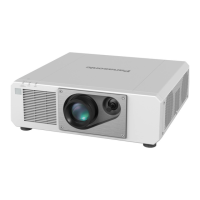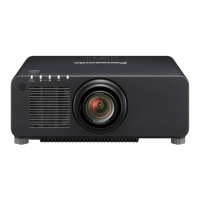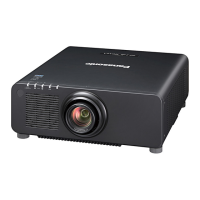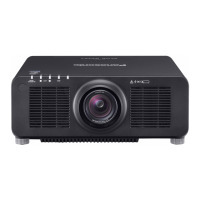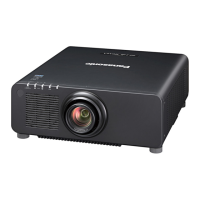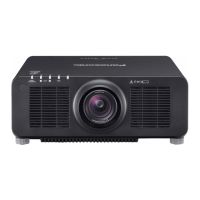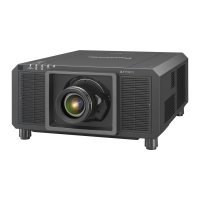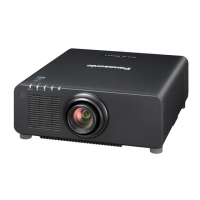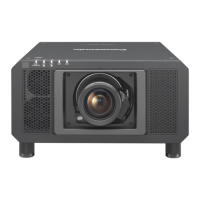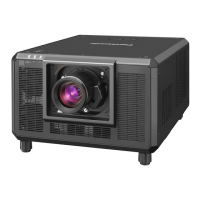Chapter 5 Operations — Network connection
128 - ENGLISH
f Connect a LAN cable to send/receive the Ethernet signal to the <LAN> terminal or the <DIGITAL LINK/LAN> terminal of the projector.
f Use a straight or crossover LAN cable that is compatible with CAT5 or higher. Either the straight or the crossover cable, or both cables
can be used depending on the system conguration. Consult your network administrator. The projector will determine the type of the cable
(straight or crossover) automatically.
f Use a LAN cable of 100 m (328'1") or shorter.
Example of network connections via a twisted-pair-cable transmitter
Computer
Projector
LAN cable (straight) LAN cable (straight)LAN cable (straight)
Twisted-pair-cable transmitter
Hub
Attention
f When a LAN cable is directly connected to the projector, the network connection must be made indoors.
Note
f For the LAN cable between the twisted-pair-cable transmitter and the projector, use a cable that meets the following criteria:
g Conforming to CAT5e or higher standards
g Shielded type (including connectors)
g Straight-through
g Single wire
f The maximum transmission distance between the twisted-pair-cable transmitter and the projector is 100 m (328'1"). It is possible to transmit
up to 150 m (492'2") if the twisted-pair-cable transmitter supports the long-reach communication method. However, the signal that the
projector can receive is only up to 1080/60p (1 920 x 1 080 dots, dot clock frequency 148.5 MHz) for the long-reach communication method.
If this distance is exceeded, image may be disrupted or a malfunction may occur in LAN communication.
f When laying cables between the twisted-pair-cable transmitter and the projector, conrm that cable characteristics are compatible with
CAT5e or higher using tools such as a cable tester or cable analyzer.
When a relay connector is used, include it in the measurement.
f Do not use a hub between the twisted-pair-cable transmitter and the projector.
f Do not pull cables forcefully. Also, do not bend or fold cables unnecessarily.
f To reduce the effects of noise as much as possible, stretch out the cables between the twisted-pair-cable transmitter and the projector
without any loops.
f Lay the cables between the twisted-pair-cable transmitter and the projector away from other cables, particularly power cables.
f When laying multiple cables, run them side by side along the shortest distance possible without bundling them together.
f After laying the cables, go to the [NETWORK] menu → [DIGITAL LINK STATUS] and conrm that the value of [SIGNAL QUALITY] is
displayed in green which indicates normal quality.
f For twisted-pair-cable transmitters of other manufacturers of which the operation has been veried with the projector, visit the Panasonic
website (http://panasonic.net/avc/projector/). Note that the verication for devices of other manufacturers has been made for the items set
by Panasonic Corporation, and not all the operations have been veried. For operation or performance problems caused by the devices of
other manufacturers, contact the respective manufacturers.
Setting the projector
1) Connect the projector to a computer using a LAN cable.
2) Turn on the power of the projector.
3) Press the <MENU> button to open the [NETWORK] menu, select [NETWORK SETUP], and press the
<ENTER> button.
4) Perform the [NETWORK SETUP] setting.
f Refer to [NETWORK SETUP] (x page 123) for details.
Note
f To connect to an existing network, perform after consulting your network administrator.
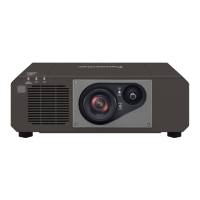
